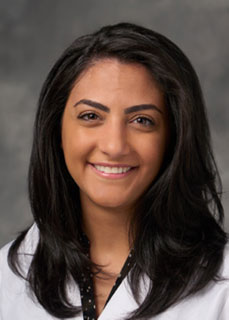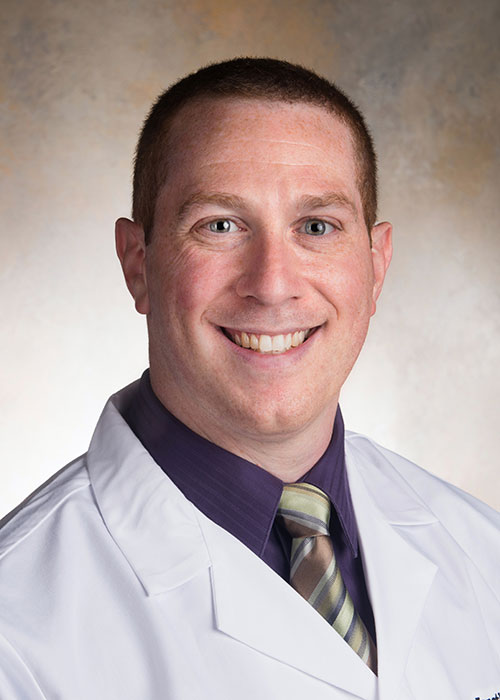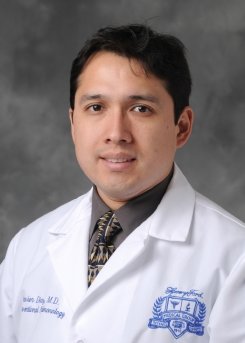Evolutionary Education: The Role of Telementoring and Remote Learning in Bronchoscopy Education
Benn BS, Kurman JD. Evolutionary Education: The Role of Telementoring and Remote Learning in Bronchoscopy Education. ATS Scholar 2023;4:20–26
Summary
This article focused on the application of telementoring and utilizing remote technology in teaching bronchoscopy as the need arose during the COVID-19 pandemic. The authors seemingly found success in this method for their learners by increasing their case exposure and allowing for real time teaching during procedures by an experienced physician. The advantages and disadvantages of implementing and utilizing the technology were discussed.
Interview
MS: Did your educators find that there was a significant difference in performance of those who received telementoring in comparison to the ones who did not? What were those differences?
BB & JS: While no significant differences were objectively measured in terms of performance, the consensus from those involved in the experience was that they were able to better understand the cognitive aspect of why the procedure was being done as it was unfolding and what the proceduralist’s thought process was in making these decisions in real time. This finding was in contrast to the typical experience in which questions may be held and asked later, leading to a lack of ability for the learner to engage the mentor in real time, and potentially missing the opportunity to ask questions or discuss points as they were identified. The telementoring experience facilitated an open, fluid dialogue that was valuable for all involved in the process.
MS: It seems that telementoring could have a big impact on the non-technical skills of the learners (i.e. decision-making during the procedure, assessment of airways, etc.) which is a very important aspect of bronchoscopy learning. How do you see it being applied to the technical skill portion of bronchoscopy learning?
BB & JS: We think that these non-technical skills, or the cognitive aspect of performing the procedure, are some of the most important questions that need to be discussed before, during, and after a procedure, but usually are not due to various constraints. Our model allowed for questions to be asked fluidly in real time as if a conversation was occurring, giving the mentee/trainee free ability to ask all questions that were of interest without being concerned that doing so would interrupt a critical part of the procedure. It allowed for these types of discussions, the why and what we are doing, to be asked and discussed thoroughly to the benefit of everyone.
MS: Your experience describes the benefits of using telementoring in the beginning of the bronchoscopy learning process. Do you see also benefits of its use in the advanced phases of learning? How would you integrate it?
BB & JS: We believe that telementoring is applicable across the continuum of bronchoscopy education. It can be used to introduce new learners to the basics of bronchoscopy from both a technical standpoint and from the cognitive aspect as well as learners who possess more experience, confidence, and competence in their skills, but are looking to hone in on certain specific aspects of a procedure they may find challenging, both from performing the procedure or understanding the approach to it. For those learners who may be away from a procedural rotation for multiple months, it allows for continuity as well as a refresher before beginning another procedural rotations. Also, new procedures can be introduced to experienced proceduralists in a more open and free environment to allow for exchange of knowledge.
In our experience, integration of telementoring in the education was seamless and does not require any significant changes to the existing curriculum. Other than making sure there is a stable internet connection and people are aware that it is available to be used, no other significant investments are required. It is comparable to any other web-based experience in execution and process.
MS: Were there significant challenges when rearranging the bronchoscopy curriculum to include telementoring?
BB & JS: In our experience, we did not encounter any specific challenges. We utilized it as an adjunct tool to help our trainees gain further exposure and experience in their education when they were unable to attend procedures in person, when they were looking for more exposure to certain types of procedures, or when clarification about certain aspects of procedures was needed.
MS: What recommendations could you provide to other programs looking to implement telementoring or enhance the procedural experience?
BB & JS: We believe that telementoring is a valuable tool to enhance the bronchoscopy education experience for trainees. We suggest that training programs evaluate their trainees’ access and exposure to procedural training and identify gaps of time between experiences or types of specific procedures that would benefit from more exposure and use telementoring to supplement these gaps. With virtual learning being utilized more frequently throughout education, the ability to offer trainees more options to enhance their educational experience seems to be a beneficial approach for all parties involved.
Blog Post Author

Monique Saleh is a first year pulmonary and critical care medicine fellow at Henry Ford Health located in Detroit, Michigan. She completed her internal medicine residency and chief residency at Beaumont Health. She is interested in medical education and exploring different educational methods.
Article Author

Dr. Bryan S. Benn, MD, PhD is an interventional pulmonologist practicing at the Cleveland Clinic in Cleveland, Ohio. He completed both his interventional pulmonology and pulmonary and critical care fellowships at the University of California, San Francisco, internal medicine residency at Thomas Jefferson University Hospitals, and his combined MD/PhD at New Jersey Medical School. A board-certified physician in internal medicine, pulmonary diseases, critical care medicine, and interventional pulmonology, his clinic practice includes all aspects of advanced diagnostic and therapeutic bronchoscopy as well as pleural procedures. In addition to improving bronchoscopy education, Dr. Benn’s research interests focus on improving diagnostic accuracy of bronchoscopic biopsies of peripheral pulmonary lesions and increasing the safety and diagnostic accuracy of transbronchial lung cryobiopsies for interstitial lung disease.

Jonathan S. Kurman, MD, MBA, FCCP is an Assistant Professor of Medicine and the Director of Interventional Pulmonology at the Medical College of Wisconsin in Milwaukee, WI. He completed an interventional pulmonology fellowship at the University of Chicago and Pulmonary & Critical care training at the Medical College of Wisconsin. He is board certified in internal medicine, pulmonology, critical care, and interventional pulmonology. His interests are in diagnostic and therapeutic bronchoscopy, including airway stents, navigational bronchoscopy, endobronchial valves, photodynamic therapy, and bronchoscopy education. He has published over 30 peer-reviewed manuscripts and frequently serves as faculty at national conferences.
WEAR Mentor

Javier Diaz-Mendoza, MD



